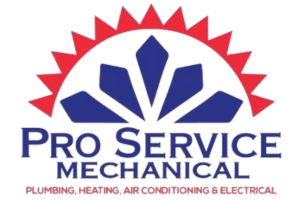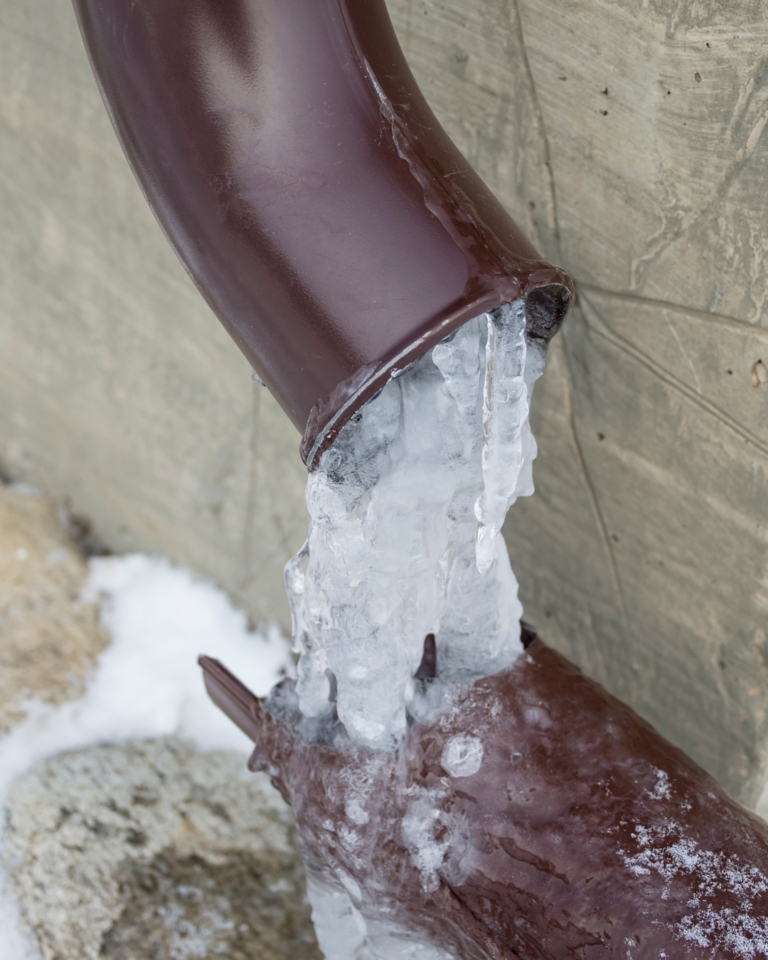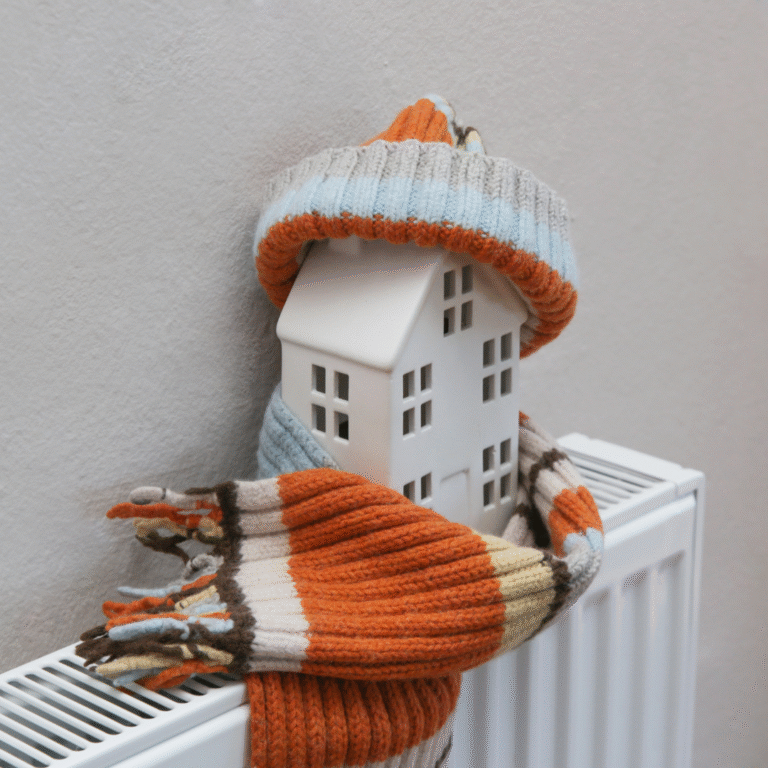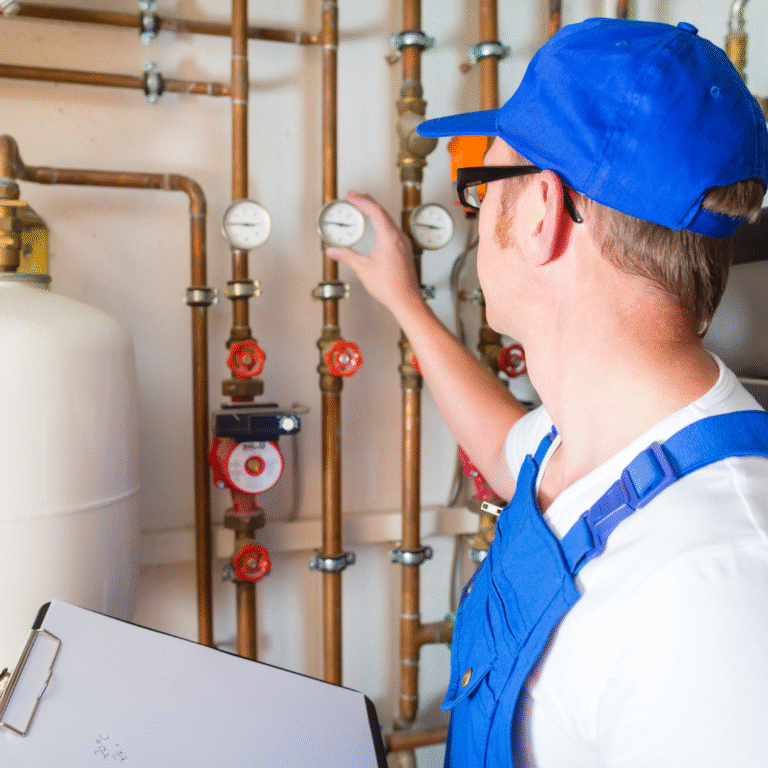Are you hearing mysterious drips or noticing damp spots in your home? Leaking pipes can be a homeowner’s nightmare, causing extensive damage if left unchecked. At Pro Service Mechanical, we frequently receive calls from concerned customers unsure if they’re dealing with a leak. This comprehensive guide will help you identify potential pipe leaks, understand their causes, and know when to call in the professionals.
Signs of Leaking Pipes
Unexplained Water Sounds
One of the most common indicators of a leak is the sound of running water when all taps are off. This could be a faint dripping or a more noticeable rushing sound. Pay attention to these sounds, especially at night when your home is quiet. If you hear water moving through pipes when no one’s using water, it’s time to investigate further.
Musty Odors
Persistent musty smells, especially in bathrooms, kitchens, or basements, often signal water accumulation from leaks. These odors occur when water seeps into materials like wood, drywall, or carpeting, creating an ideal environment for mold and mildew growth. Don’t ignore these smells, as they could indicate a hidden leak behind walls or under floors.
Water Stains
Discolored patches on walls, ceilings, or floors might be evidence of water seepage from leaking pipes. These stains often appear as yellowish or brownish marks and may grow over time. In some cases, the affected area might feel damp or soft to the touch. Keep an eye out for these stains, especially in areas near plumbing fixtures or on ceilings below bathrooms.
Mold Growth
Unexpected mold, particularly in non-bathroom areas, can suggest hidden moisture from leaks. Mold thrives in damp, dark environments, making it a telltale sign of water issues. Look for fuzzy or slimy patches on walls, ceilings, or in corners. Remember, mold isn’t just unsightly – it can also pose health risks, making prompt identification and remediation crucial.
Less Obvious Indicators
Dropping Water Pressure
A sudden decrease in water pressure throughout your home could mean a leak is diverting water flow. While low pressure can have various causes, a significant drop might indicate a leak in your main water line. Test this by checking the water pressure at different faucets in your home. If all show reduced pressure, you might be dealing with a leak.
Warping Materials
Bubbling paint, warped floorboards, or cracking tiles might indicate water damage from concealed leaks. Water can cause various materials to expand, contract, or deteriorate. Pay attention to any unusual changes in your floors, walls, or ceilings. Buckling hardwood floors, for instance, can be a sign of moisture problems potentially caused by leaking pipes underneath.
Increased Water Bills
An unexplained spike in your water bill is often one of the first signs of a hidden leak. Compare your recent bills to those from the same period last year. If you notice a significant increase without a corresponding change in water usage habits, you might have a leak. Even small leaks can waste hundreds of gallons of water over time, reflecting in your utility bills.
How to Check for Leaks
The Meter Test
This simple test can help you determine if you have a leak somewhere in your plumbing system. Turn off all water sources in your home, including ice makers and water softeners. Locate your water meter and record the current reading. Wait for at least two hours without using any water. Check the meter again. If it has moved, you likely have a leak. Remember, even small movements on the meter can indicate a significant leak over time.
Toilet Dye Test
Toilets are common sources of hidden leaks. To check, remove the toilet tank lid and add a few drops of food coloring to the tank water. Wait 15-20 minutes without flushing. Check the toilet bowl. If you see colored water, your toilet is leaking. This test helps identify leaks in the flapper valve, which can waste a substantial amount of water if left unrepaired.
Inspect Visible Pipes
Regularly examine exposed pipes under sinks, in basements, and in crawl spaces. Look for signs of corrosion, such as discoloration or rough spots on the pipes. Check for small puddles or damp areas around pipe joints. Feel along the pipes for any moisture. Catching these issues early can prevent more significant problems down the line.
DIY Leak Prevention
Regulate Water Pressure
Excessive water pressure can strain your pipes, leading to leaks over time. Install a pressure gauge on an outdoor faucet to check your home’s water pressure. If the pressure exceeds 60 psi, consider installing a pressure regulator. Have a plumber adjust your pressure regulator annually to maintain optimal pressure. Proper water pressure not only prevents leaks but also extends the life of your appliances and fixtures.
Soften Your Water
Hard water can corrode pipes over time, increasing the risk of leaks. Test your water hardness using a home test kit or through a local water testing service. If your water is hard, consider installing a water softener system. Maintain your water softener regularly, including refilling salt and cleaning the brine tank. Soft water can significantly reduce scale buildup in pipes and appliances, preventing potential leak points.
Mind the Temperature
Freezing temperatures can cause pipes to burst, leading to severe leaks. Protect your pipes by insulating those in unheated areas like basements, attics, and crawl spaces. On extremely cold nights, let faucets drip slightly to keep water moving through the pipes. Keep your home heated, even when you’re away, to prevent interior pipes from freezing. These precautions are especially important in areas prone to freezing temperatures.
When to Call a Professional
If you’ve tried DIY methods and still suspect leaks, it’s time for expert help. Professional plumbers have specialized equipment to detect and locate leaks accurately, even those hidden behind walls or underground. Leaks behind walls, under concrete slabs, or in your main water line require professional intervention. These leaks often need specialized equipment like acoustic sensors or thermal imaging cameras to locate precisely.
Extensive leaks or pipe damage need immediate professional attention to prevent further issues. Signs that warrant an emergency call include water pooling in your yard, sudden drops in water pressure, wet spots on walls or ceilings, and the sound of running water even when all fixtures are off. Don’t hesitate to call a professional if you notice any of these signs. Quick action can prevent extensive water damage and costly repairs.
How Pro Service Mechanical Can Help
At Pro Service Mechanical, we offer comprehensive leak detection and repair services. We use advanced leak detection technology to locate leaks accurately without unnecessary property damage. Our non-invasive pipe inspection tools allow us to examine pipes from the inside, identifying issues before they become major problems. Whether it’s a simple fix or a complete pipe replacement, our skilled technicians ensure lasting solutions. We also offer preventive maintenance plans to catch potential issues early, saving you money and headaches in the long run.
Don’t Wait Until It’s Too Late
Ignoring potential leaks can lead to severe structural damage, mold issues, and skyrocketing water bills. Contact Pro Service Mechanical today for a thorough pipe inspection. Our team will assess your plumbing system, identify any leaks, and provide effective solutions tailored to your home’s needs.
Remember, early detection and prompt repair are key to maintaining a healthy plumbing system. Let’s work together to keep your pipes in top condition and your home dry and safe. Don’t let a small leak turn into a big problem. Book an appointment with Pro Service Mechanical today!




